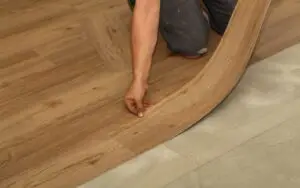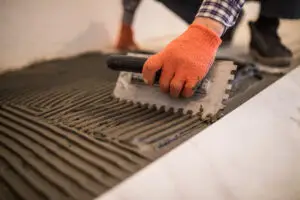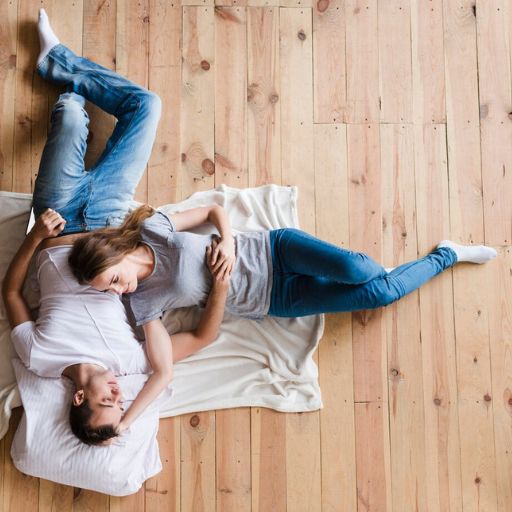Flooring Installation: Understanding Long-Lasting Flooring Options
Factors That Influence Flooring Longevity
Choosing flooring that stands the test of time depends on multiple factors, including the material, maintenance practices, and environmental conditions. Here’s what to consider:
- Material Resilience: Some materials are naturally more durable, such as tile or hardwood, while others like carpet may wear out faster.
- Maintenance Requirements: Flooring that is regularly cleaned and properly cared for lasts significantly longer.
- Environmental Suitability: High-moisture or high-traffic areas require water-resistant and durable flooring solutions.
The Longest-Lasting Flooring Types
1. Hardwood Flooring
- Average Lifespan: 50–100 years with proper maintenance.
- Why It Lasts: Can be sanded and refinished multiple times to restore its original beauty.
- Challenges: Susceptible to moisture and scratches; requires protective measures like sealing and furniture pads.
2. Tile Flooring
- Types: Ceramic and porcelain tiles are the most durable.
- Average Lifespan: 50+ years for porcelain; slightly less for ceramic.
- Advantages: Highly resistant to water, stains, and wear; ideal for bathrooms and kitchens.
- Drawbacks: Can crack under heavy impact; grout may require periodic sealing.
3. Luxury Vinyl Plank (LVP)
- Average Lifespan: 20–30 years, depending on quality.
- Why It Lasts: Engineered to resist scratches, moisture, and wear, making it perfect for busy households.
- Limitations: May fade over time in direct sunlight if not UV-treated.
4. Concrete Flooring
- Average Lifespan: 50+ years, particularly in modern, polished forms.
- Benefits: Extremely durable and resistant to wear, moisture, and impact.
- Challenges: Can crack over time without proper sealing and care.
5. Laminate Flooring
- Average Lifespan: 15–25 years.
- Advantages: Affordable, scratch-resistant, and easy to clean.
- Drawbacks: Susceptible to water damage if not sealed properly.
Comparing Lifespan by Room Type
Kitchens
- Recommended: Tile or LVP for water resistance and durability.
- Avoid: Hardwood, unless sealed to prevent water damage.
Living Rooms
- Recommended: Hardwood or LVP for their blend of style and longevity.
- Avoid: Carpet, as it wears quickly in high-traffic areas.
Bathrooms
- Recommended: Porcelain tile for superior moisture resistance.
- Avoid: Laminate or hardwood due to their vulnerability to water damage.
Outdoor Spaces
- Recommended: Concrete or weatherproof tile.
- Avoid: Carpet or standard hardwood.
Maintenance Tips for Maximizing Flooring Lifespan
Cleaning Practices:
- Regularly vacuum and mop to remove debris that can cause scratches.
- Use mild cleaning solutions suitable for your flooring type.
Protective Measures:
- Place rugs or mats in high-traffic areas.
- Attach felt pads to furniture legs to prevent scratches.
Repairs and Sealing:
- Refinish hardwood floors every 7–10 years.
- Reseal grout in tiled areas to prevent cracking or staining.
Environmental Impact and Sustainability
Eco-conscious homeowners are increasingly choosing sustainable flooring options.
- Hardwood: Opt for sustainably harvested or reclaimed wood.
- Tile: Many brands offer tiles made from recycled materials.
- LVP: Look for low-VOC (Volatile Organic Compound) products to reduce indoor air pollution.
DIY vs Professional Flooring Installation
Why DIY Can Affect Longevity
- Mistakes during installation, such as uneven surfaces or improper sealing, can reduce the lifespan of your flooring.
- Lack of specialized tools can result in suboptimal outcomes.
Benefits of Professional Installation
- Professionals ensure precise installation, enhancing the durability and appearance of your flooring.
- Installation warranties often cover potential issues, offering peace of mind.
Cost vs Longevity: Is It Worth the Investment?
- Hardwood: High upfront cost but exceptional longevity and refinishing potential.
- Tile: Cost-effective for its durability, especially in wet areas.
- LVP: Affordable, with excellent value for medium-term durability.
- Concrete: Low-cost maintenance balances the initial installation expenses.
Flooring Trends for Longevity in 2024
- Hybrid Materials: Combining durability with eco-friendliness, hybrid options like engineered wood are gaining popularity.
- Natural Aesthetics: Neutral tones and wood-like finishes dominate, ensuring timeless appeal.
- Textured Surfaces: Flooring with embossed or hand-scraped finishes for better wear resistance.
Ready to invest in long-lasting flooring? Contact a professional flooring installation service today for expert advice and flawless results!
FAQs & Answers
Tile and hardwood are among the most durable options, with proper maintenance extending their lifespan.
LVP offers great durability, especially in waterproof varieties, but tile generally lasts longer under heavy wear.
Yes, professional installation ensures proper fitting, reducing risks of warping or premature wear.
Tile, LVP, and concrete are ideal for high-traffic spaces due to their resilience and low maintenance.
Regular cleaning, proper sealing, and using protective measures like rugs and furniture pads can significantly extend flooring life.





